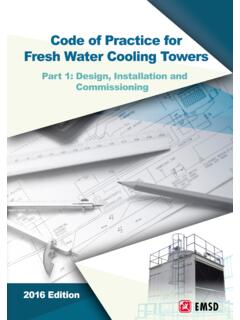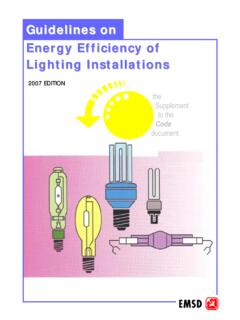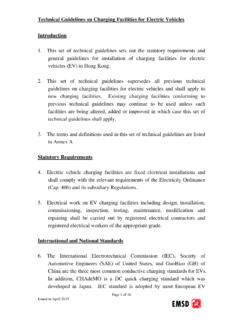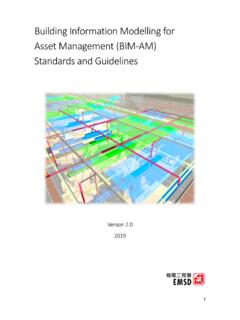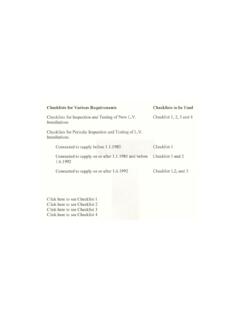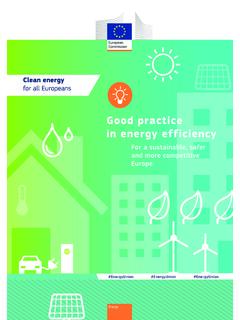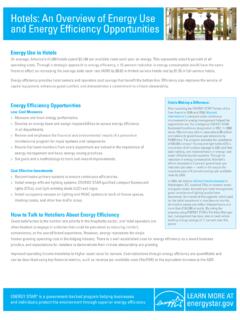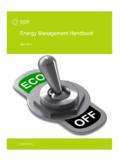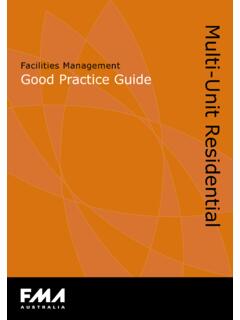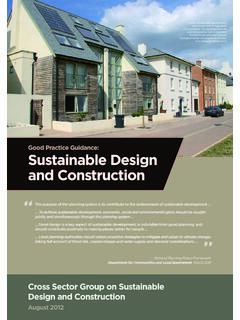Transcription of Guidelines on Energy Efficiency of Lift & Escalator ...
1 Page 1 of 27 GGuuiiddeelliinneess oonn EEnneerrggyy EEffffiicciieennccyy ooff LLiifftt && EEssccaallaattoorr IInnssttaallllaattiioonnss 22000077 EEDDIITTIIOONN the Supplement to the Code document Guidelines on Energy Efficiency of Lift & Escalator Installations, 2007 Preface The Code of Practice for Energy Efficiency of Lift & Escalator Installations (Lift & Escalator Code) developed by the Electrical & Mechanical Services Department (EMSD) aims to set out the minimum design requirements on Energy Efficiency of lift & Escalator installations.
2 It forms a part of a set of comprehensive Building Energy Codes (BEC) that addresses Energy Efficiency requirements in building services installations. The set of comprehensive BEC covers the Lift & Escalator Code, the Codes of Practice for Energy Efficiency of Lighting Installations, Air Conditioning Installations and Electrical Installations, and the Performance-based Building Energy Code. As a supplement to the Lift & Escalator Code, the EMSD has developed this handbook of Guidelines on Energy Efficiency of Lift & Escalator Installations ( Guidelines ).
3 The intention of the Guidelines is to provide guidance notes to compliance with the Lift & Escalator Code and draw attention of lift & Escalator designers & operators to general recommended practices for Energy Efficiency and conservation on the design, operation & maintenance of lift & Escalator installations. The Guidelines seek to explain the requirements of the Lift & Escalator Code in general terms and should be read in conjunction with the Lift & Escalator Code. It is hoped that designers will not only design installations that would satisfy the minimum requirements stated in the Lift & Escalator Code, but also pursue above the minimum requirements.
4 The Guidelines were first published in 2000. With the Lift & Escalator Code upgraded to its 2005 edition, an addendum for the Guidelines was issued in 2005. The Guidelines are amended in 2007 to suit the 2007 edition of the Lift & Escalator Code. To promote the adoption of the BEC, the Hong Kong Energy Efficiency Registration Scheme for Buildings was also launched. The Registration Scheme provides the certification to a building complying with one or more of the BEC. This book of Guidelines is copyrighted and all rights (including subsequent amendments) are reserved.
5 Acknowledgement In the preparation of the Guidelines , reference has been made to the following publications: a) CIBSE Guide D Transportation Systems in Buildings, CIBSE b) Barney, , and Dos Santos, , Elevator Traffic Analysis Design and Control, Peter Peregrinus, 1995 [Relevant contents quoted are: (p57, 58), (p85), (p95), Table (p51), and Examples & (p65 to 67) c) Stawinoga, Roland, Designing for Reduced Elevator Energy Cost , ELEVATOR WORLD magazine, Jan 1994 d) Al-Sharif, Lutfi, Bunching in Lifts, ELEVATOR WORLD magazine, Jan 1996 e) Malinowski, John, Elevator Drive Technologies, ELEVATOR WORLD magazine, Mar 1998 f) Guide Notes on Elevators (Lifts) Planning, Selection and Design, 1997, Department of Public Works & Services, Australia [Relevant contents quoted are: 7.]]
6 Electrohydraulic Lifts] The Building Energy Codes, corresponding Guidelines and Registration Scheme documents are available for download at Enquiry: CCHHEECCKK WWEEBB--SSIITTEE FFOORR LLAATTEESSTT IINNFFOORRMMAATTIIOONN i page ii of 27 Guidelines on Energy Efficiency of Lift & Escalator Installations, 2007 CONTENTS 1. INTRODUCTION .. 1 2. CODE 1 Maximum Allowable Electrical Power of Lifts, Escalators and Passenger Conveyors 1 Energy Management of Lifts, Escalators & Passenger Conveyors.
7 2 Power Quality Requirements .. 2 3. CONSIDERATIONS IN DESIGN OF LIFTS & 3 Factors That Affect Energy Consumption of Lift and Escalator 3 General Principles to Achieve Energy Efficiency .. 3 4. Energy Efficiency FOR LIFT AND Escalator 4 General .. 4 Traction Lift Equipment .. 4 Motor Drive Control System .. 4 Motor Drive Gears .. 6 Motor .. 7 Other Means to Reduce Running Friction .. 7 Hydraulic Lift Equipment .. 8 Main Components .. 8 Basic Arrangements .. 8 Valve Unit .. 9 Energy Efficiency for Hydraulic Lift Equipment .. 9 Escalator and Passenger Conveyor Equipment.
8 11 Motor Drive Control System .. 11 Motor Drive Gears and Power Transmission .. 12 Power Quality of Equipment .. 12 VVVF Motor Drive, Energy optimizer, Service-on-demand Escalator 14 5. Energy Efficiency FOR DESIGN OF LIFT AND Escalator 14 Appropriate Sizing of Vertical Transportation System .. 14 Appropriate Zoning of Lift Installations .. 16 Energy Management of Lift System .. 17 Provisions of Metering Devices .. 17 Control Algorithm of Lift .. 17 Standby Mode of Lift Equipment .. 18 Energy Management of Escalator and Conveyor System.
9 19 Provision of Metering Devices .. 19 Standby Mode of Escalators and Conveyors .. 19 Internal Decoration of Lift Cars .. 19 Lift Traffic Design .. 19 Handling Capacity of Lift System .. 21 6. HOUSEKEEPING MEASURES TO ENHANCE Energy 22 7. MODERNISATION OF OLD 23 APPENDIX I SAMPLE CALCULATION FOR LIFT TRAFFIC ANALYSIS .. 25 ii Guidelines on Energy Efficiency of Lift & Escalator Installations, 2007 1. INTRODUCTION The primary objective of the Code of Practice for Energy Efficiency of Lift & Escalator Installations (Lift & Escalator Code), published by the Electrical and Mechanical Services Department (EMSD), is to set out the minimum Energy -efficient design standards for lift & Escalator installations without imposing any adverse constraint on building functions, nor hindrance to comfort or productivity of the building occupants.
10 The Guidelines on Energy Efficiency of Lift & Escalator Installations ( Guidelines ) is a supplement to the Lift & Escalator Code. The intention of the Guidelines is to explain the principles behind relevant requirements in the Lift & Escalator Code and provide guidance on Code compliance. The Guidelines also provide the recommended general practices for Energy Efficiency and conservation on the design, operation & maintenance of lift & Escalator installations. Whilst focusing on Energy Efficiency aspects, the Guidelines are not to provide a comprehensive set of guidance notes in lift & Escalator design.


